How do you make espresso? What factors affect the extraction of a cup of espresso?
Do you feel bitter and astringent every time you drink concentrate? Maybe you opened it in the wrong way! I feel that it is not difficult to concentrate Italian style, it is just the matter of grinding powder one by one, pressing one button after another and then pressing a switch. Not really, in fact, in just a few minutes, there are a lot of fastidious!
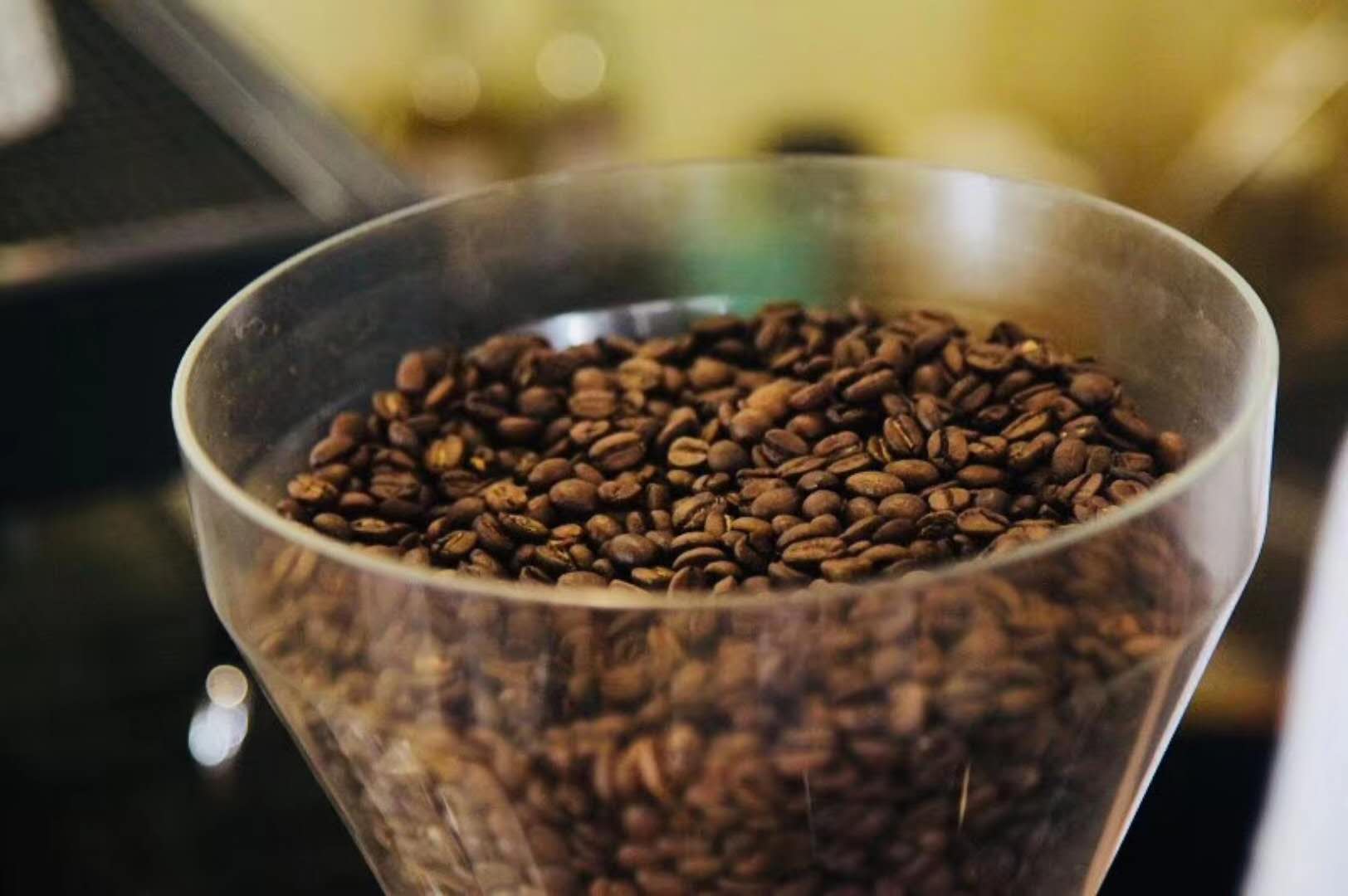
First of all, let's take a look at coffee beans! Yes, yes, coffee beans are very important if you want to make a stable concentrated cup!
Generally speaking, it is recommended to keep Italian coffee beans in front of the street for about ten days, but as we all know, deep-baked beans will exhaust faster than shallow baked beans, but why does our proposal take so long?
This is because there is not enough room for coffee exhaust when it is concentrated, like hand flushing. If the coffee beans are too fresh and the exhaust is exuberant, it is easy to produce a channel effect, resulting in unstable concentration.
Now that we have the right coffee beans, we need to look at the concentrated grindness! This is basically done every day-- grinding. The degree of grinding of espresso is not set on a certain scale alone. when should the degree of grinding be adjusted?
You may need to adjust the condition of the bean grinder:
1. When the temperature, pressure and humidity change suddenly, especially in the open space, it is most obvious.
two。 When the old and new coffee beans are replaced: when a bag of coffee beans is used up and the beans are poured into the newly opened beans alternately. Because the roasting date, batch and cultivation period of newly opened coffee beans may be different, the extraction situation is very different.
3. Continuous brewing: the grinding degree will suddenly become very fine after 6 cups of continuous 5 murmur. this is because after the continuous use of the bean grinder, the heat energy of the motor conducts heat to the cutter head, plus the heat energy produced by the friction between the cutter head itself and the coffee beans. as a result, the gap between the upper and lower cutters becomes very fine due to thermal expansion and cold shrinkage.
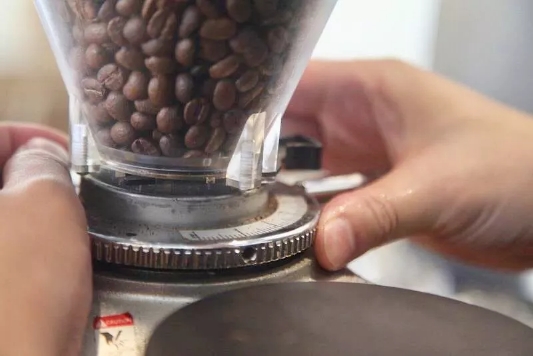
The humidity and storage time of coffee beans are constantly changing, and the wear degree of bean grinder blades has also changed over time, so baristas should adjust the bean grinder regularly to ensure that the ground coffee powder remains perfect.
When the coffee bean enters the grinder, the blade in the grinder will crush the coffee bean into powder. The smaller the distance between the blade and the blade, the smaller the coffee beans will be ground into smaller particles.
The finer the grinding particles are, the tighter they are, and the more difficult it is for the water to pass through, thus greatly prolonging the extraction time.
On the contrary, if the distance between the blades increases, the ground particles will become rougher, the flow of water will be easier to pass through, and the extraction time will be faster.
In general, Qianjie coffee will use the last extraction parameters to do a cup of concentration, the time is controlled within 25-30 seconds, the amount of single powder is 13-14 grams, the amount of double-end powder is about 20 grams.

After excluding factors such as pressed powder perforation, if the extraction time becomes longer, it may be over-extracted on the surface, but not enough on the inside, showing acidity, because it is not sweet enough, and then bitter and astringent, then the powder may be too fine. At this time, you can thicken it a little bit. But if the flow rate of coffee becomes faster, the current is thick, the extraction is light, the color is white, and the flavor is sharp and sour, it may be a little thicker, and it can be adjusted slightly at this time.
After determining the degree of grinding, it is to receive the powder!
Powder is the first step of powder distribution, which is uneven, which misleads and affects the next step of powder distribution to a great extent. even if you use a very advanced auxiliary artifact of powder distribution, you can't completely ignore the effect of powder on espresso extraction.
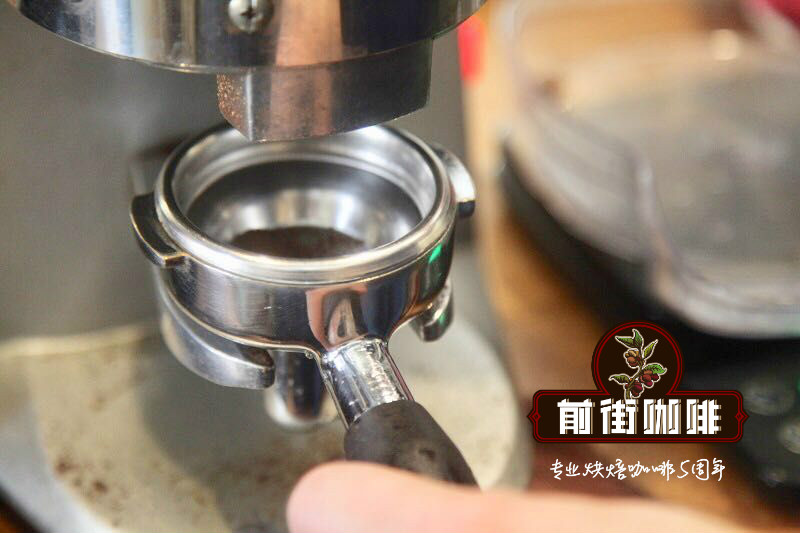
What is the effect of uneven powder?
1, the difference in taste: if the powder is not uniform, the distribution of the lower part of the powder layer can not be remedied when the powder is distributed. The uneven density distribution of the powder layer will lead to uneven thickness of pressed powder, different speeds of hot water passing through different positions during extraction, and a little carelessness can easily lead to perforation and channel effect (the inertia of water will make water choose a place where it is easy to pass through, while ignoring other ways), resulting in insufficient and over-extraction of part of pressed powder, and the taste of coffee is unstable each time.
2. the gap of extraction parameters is too large, which leads to the bean grinder which has been adjusted for a long time, the flow rate is not right, the time is not right, the grinding degree is still wrong, a pile of coffee beans have been worn away, but the product is still not stable.
So how to practice powdering?
1. Prepare the electronic scale.
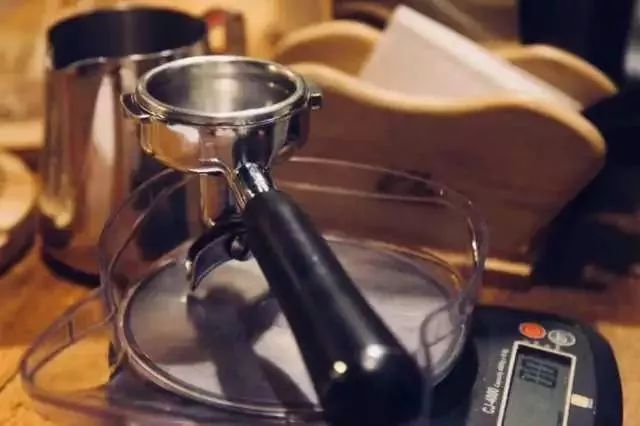
Weighing the powder before each extraction is a necessary operation for making perfect Italian concentration. Even if it is a quantitative bean grinder, I suggest you regularly check the weighing accuracy of the bean grinder. After all, no matter how advanced the machine is, there will inevitably be errors and failures.
2. Rotating powder.
Whether the hand is dialed or straight out, as long as the coffee powder does not fall completely vertically, the powder layer will still show a certain degree of deviation under the influence of lateral acceleration, for example, when pulling the powder by hand, the effect of hard pulling is different from that of gently pulling-the harder the more to the left.
At this point, it is necessary to keep the powder at a uniform speed and rotate the handle at a uniform speed to keep the powder evenly distributed to different positions of the powder bowl-of course, it is impossible to be absolutely uniform, but at least it is much better than fixed powder.
3. Tap and pat.
After receiving the powder, gently knock on the bracket or table, can effectively eliminate the large gap in the powder layer, fluffy or strong, uniform or not, the distribution of the powder layer at a glance. With a little horizontal tapping, you don't even need additional cloth techniques to achieve a perfect cloth effect.
After receiving the powder, then it is cloth powder!
Our common ways of distributing powder are as follows:
First, scraping flat cloth powder method.
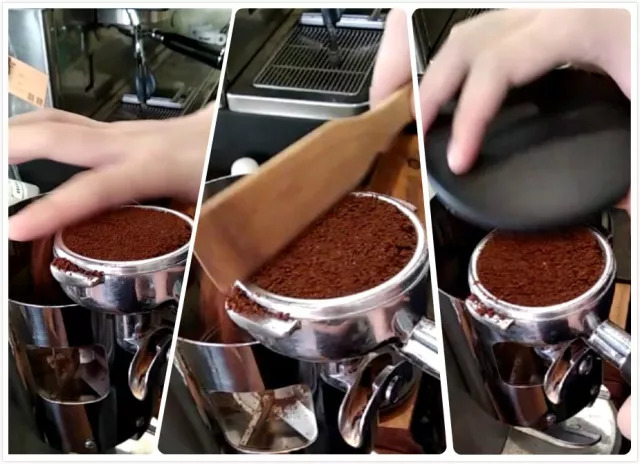
The method of scraping flat cloth powder has three sharp tools: powder bin cover, bamboo and fingers. The method of scraping flat cloth powder is one of the most common and earliest contact methods for beginners. It usually cooperates with the movements such as pushing back and forth, and is divided into "square cloth powder" scraped around and left and right, "rotary cloth powder" scraped flat by 360 degrees, and so on.
Second, gently pat and knock the cloth powder method.
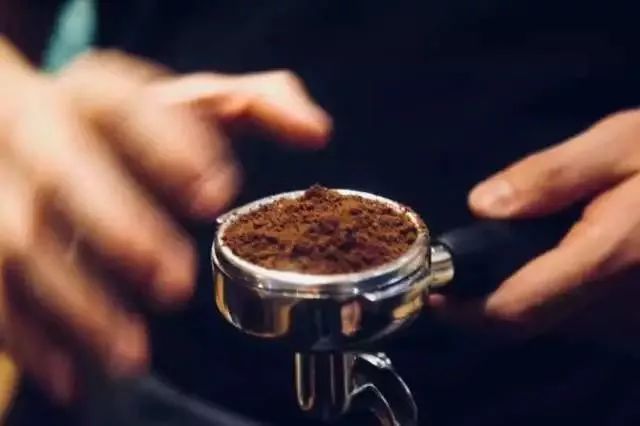
Tapping and tapping are two movements, but they are usually used continuously. The palm quickly taps the bottom of the handle and shakes the powder pile evenly, supplemented by a straight up and down tap, which can effectively eliminate the large gap in the powder layer, make the coffee powder pile denser, and increase the amount of powder that can be contained in the powder bowl.
Third, the method of appliance-assisted cloth powder.
When it comes to auxiliary cloth powder, of course, each shows his or her magical powers. According to all kinds of artifacts on the market, there are mainly several kinds: ① stirring or shaking well; ② smoothing the surface; ③ sieve dispersion; ④ rotating distribution.
Inspection of the effect of powder distribution
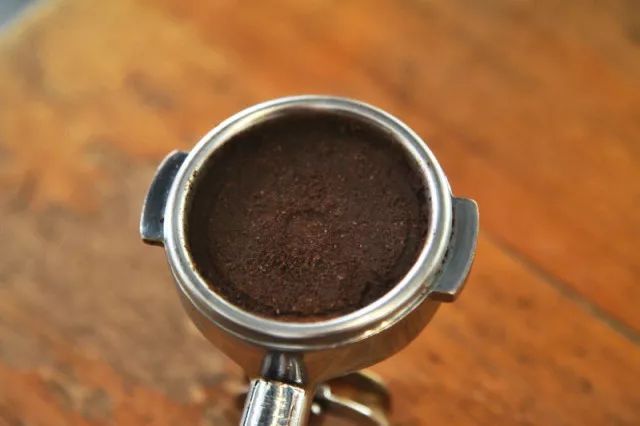
In the process of extraction, if it is found that the state of the coffee liquid will soon become unstable, a large jump, and the color will soon become very light, at this time, we can judge: there is a problem inside the pressed powder (cracks appear) or the uneven pressing of the coffee powder makes the less part of the coffee powder overextracted (and this is probably due to the uneven distribution of the powder) or the uneven distribution of the powder. So that the edge is not covered with coffee powder, causing the water to flow directly through there.
After the extraction is completed, take off the handle and observe the shape of the pressed powder. If there is no coffee powder on the edge, or the coffee powder is soaked or there is an obvious gap in the pressed powder, it is the extraction failure caused by uneven cloth powder.
After the powder is laid, it will be pressed.
The purpose of pressing powder: to make the loose coffee powder tight through a certain pressure, so as to let the pressurized hot water permeate evenly.
The direction of pressing powder is vertically downward. If the pressure is inclined, the high-temperature and high-pressure hot water coming out of the boiling head will seek the infiltration of the layer with the least resistance, resulting in uneven extraction. At the same time, it is easy to have the channel effect that we often talk about.
The power of pressing powder and what kind of powder hammer you use does not matter much, as long as you press the powder tightly. Therefore, it is all the more important to keep the powder pressing force consistent every time.
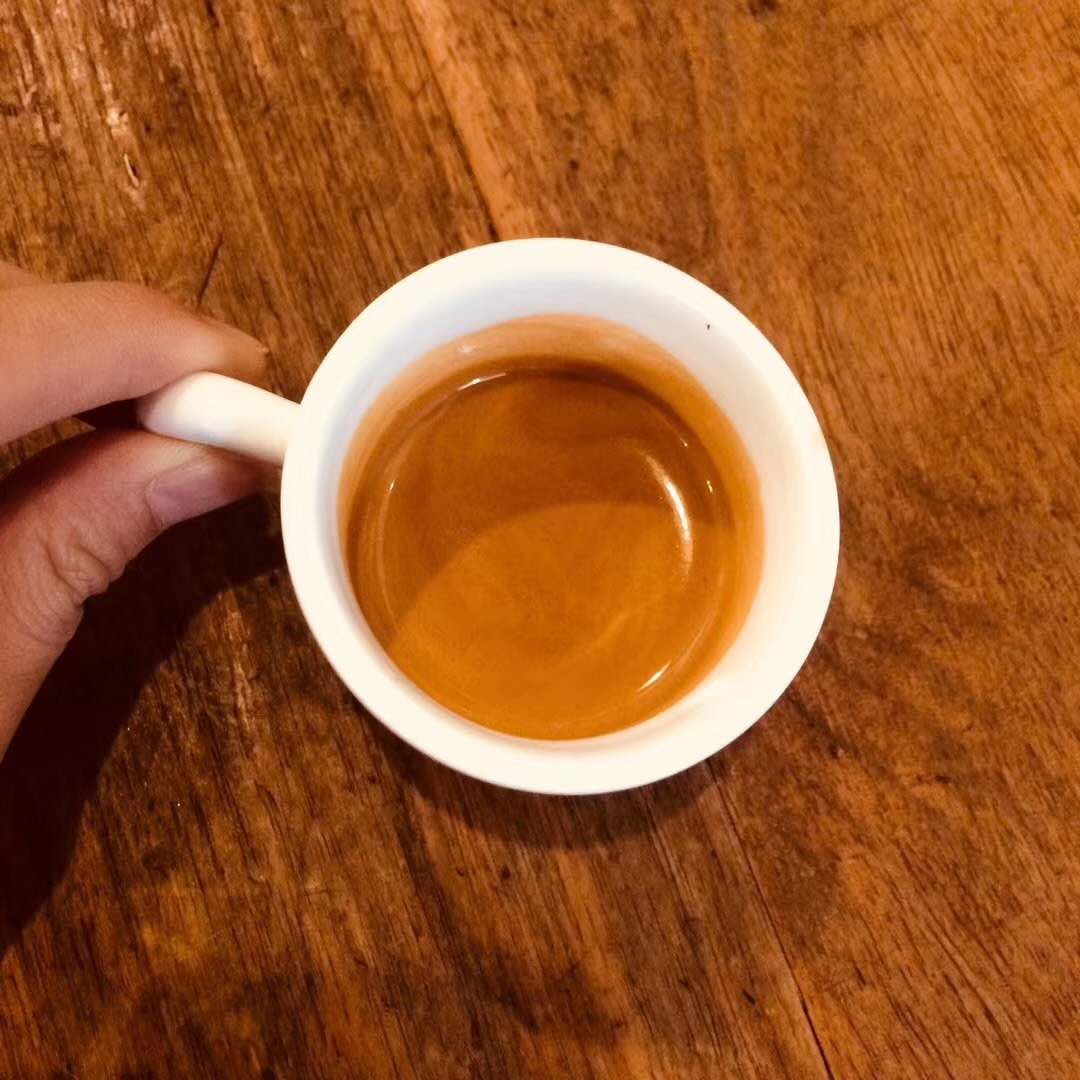
Important Notice :
前街咖啡 FrontStreet Coffee has moved to new addredd:
FrontStreet Coffee Address: 315,Donghua East Road,GuangZhou
Tel:020 38364473
- Prev

If you don't understand the secret of milk, you don't know how to add milk to coffee.
Professional coffee knowledge exchange more coffee bean information Please pay attention to the secret of milk in the coffee workshop (Wechat official account cafe_style) in the coffee shop's drink menu, milk and espresso are the soul elements that make up most drinks. The process of making a cup of milk coffee is by no means easy, and it takes a lot of patience to witness the barista inject milk into the
- Next
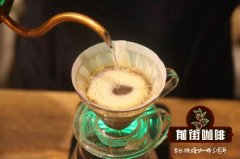
How would you like your coffee for two? How to choose the grinding degree of coffee? How to inject water into steaming?
Professional coffee knowledge exchange more coffee bean information Please follow the coffee workshop (Wechat official account cafe_style) recently many friends have asked the editor some questions about hand brewing. The editor has organized this novice Q & A, hoping to help friends who have the same questions in this respect. 01 | is the extraction time the same when making two cups as when making one cup?
Related
- What is the meaning of lactic acid fermentation with coffee bean treatment?
- How to judge the state of foam by sound?
- How does the latte pull out the unicorn pattern? Come to get for a little trick to improve the flower pull!
- Will flower pulling affect the taste of the latte?
- Do you know the history of coffee?
- The difference between honey treatment and sun washing what is raisin honey treatment?
- What kind of milk can a novice use to make coffee foam to keep the foam longer? The correct method and skills of milking tutorial sharing
- Why do washed coffee beans taste sour? Flavor characteristics of washed Coffee
- Introduction to the skill of how to practice the size and height of water injection around the circle of hand-brewed coffee
- How do beginners practice coffee flower drawing from scratch?

